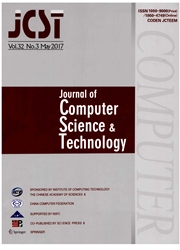

 中文摘要:
中文摘要:
Most of previous video recording devices in mobile vehicles commonly store captured video contents locally. With the rapid development of 4G/Wi Fi networks, there emerges a new trend to equip video recording devices with wireless interfaces to enable video uploading to the cloud for video playback in a later time point. In this paper, we propose a QoE-aware mobile cloud video recording scheme in the roadside vehicular networks, which can adaptively select the proper wireless interface and video bitrate for video uploading to the cloud. To maximize the total utility, we need to design a control strategy to carefully balance the transmission cost and the achieved QoE for users. To this purpose, we investigate the tradeoff between cost incurred by uploading through cellular networks and the achieved QoE of users. We apply the optimization framework to solve the formulated problem and design an online scheduling algorithm. We also conduct extensive trace-driven simulations and our results show that our algorithm achieves a good balance between the transmission cost and user QoE.
 英文摘要:
英文摘要:
Most of previous video recording de- vices in mobile vehicles commonly store captured video contents locally. With the rapid develop- ment of 4G/WiFi networks, there emerges a new trend to equip video recording devices with wire- less interfaces to enable video uploading to the cloud for video playback in a later time point. In this paper, we propose a QoE-aware mobile cloud video recording scheme in the roadside vehicular networks, which can adaptively select the proper wireless interface and video bitrate for video up- loading to the cloud. To maximize the total utility, we need to design a control strategy to carefully balance the transmission cost and the achieved QoE for users. To this purpose, we investigate the tradeoff between cost incurred by uploading through cellular networks and the achieved QoE of users. We apply the optimization framework to solve the formulated problem and design an online scheduling algorithm. We also conduct extensive trace-driven simulations and our results show that our algorithm achieves a good balance between the transmission cost and user QoE.
 同期刊论文项目
同期刊论文项目
 同项目期刊论文
同项目期刊论文
 期刊信息
期刊信息
